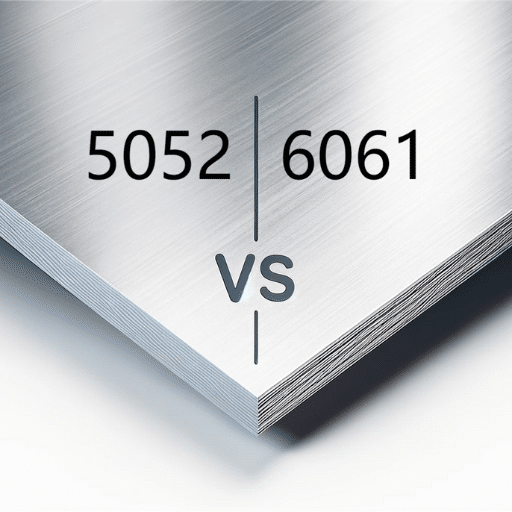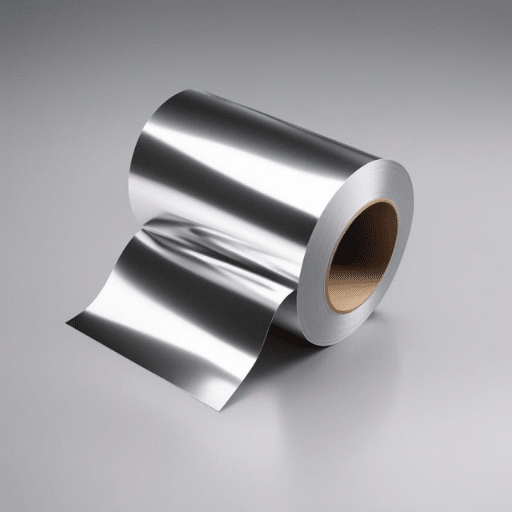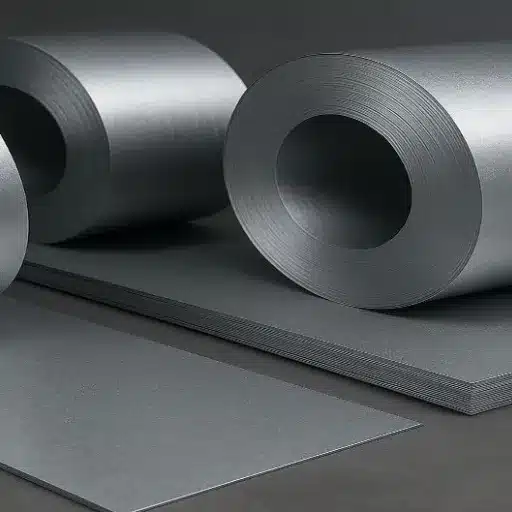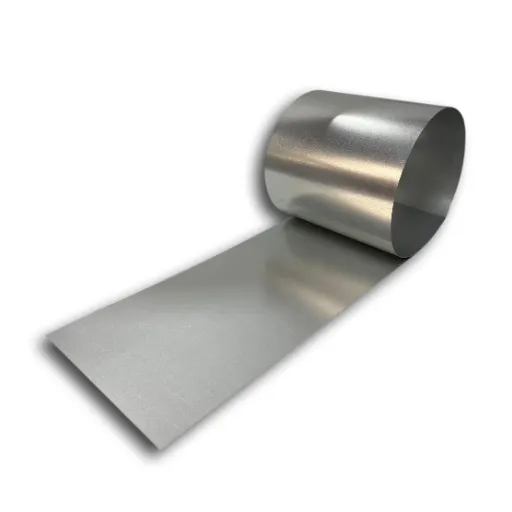Because of its strength, versatility, and resistance to corrosion, stainless steel is a material of choice in construction and even in the making of cookware. But how does it fare in thermal conductivity? Knowing the performance of stainless steel when it comes to conducting heat is fundamental in applications that need precise temperatures and efficient heat transfer. In this post, we dive deeper into how the thermal conductivity of stainless steel measures up against other metals such as aluminum, copper, and iron. We’ll unpack what stainless steel’s conduction capabilities depend on, weigh its pros and cons, and clarify where temperatures dictate the operations of stainless steel works best. Join us as we explore the science of this excellent material and its thermal performance.
What is the thermal conductivity of stainless steel compared to other metals?
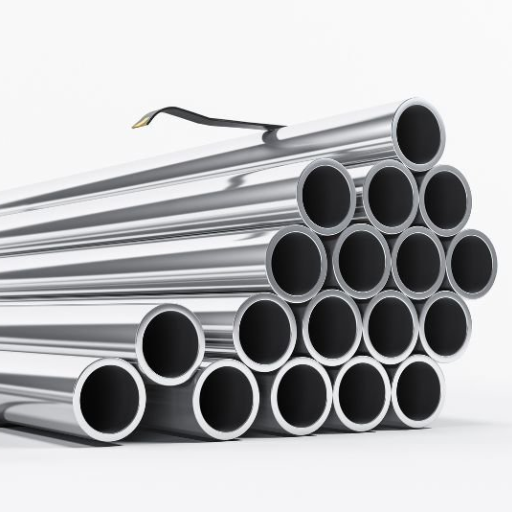
Stainless steel does not conduct heat as well as other metals used in manufacturing. The thermal conductivity of stainless steel ranges from 14 to 16 W/m·K for every alloy. Stainless steel’s most common rival, aluminum, is far greater at about 205 W/m·K. Copper is even more efficient at thermal conductivity with copper measuring around 385 W/m·K. If compared to iron, which has stainless steel’s thermal conductivity beaten by 64% (80 W/m·K), iron falls well below aluminum and copper. Albeit lacking in thermal conductivity efficiency, stainless steel performs well in applications requiring the material to hold heat while needing to withstand corrosion, high pressure, or highly durable.
How does stainless steel’s thermal conductivity compare to carbon steel?
Stainless steel is known to have a lower thermal conductivity than carbon steel. The thermal conductivity for carbon steel is usually between 45 and 60 W/m·K, depending on the specific grade and composition of the steel. On the other hand, stainless steel, especially the austenitic grades like 304 or 316, has an average thermal conductivity of approximately 15 W/m·K which is significantly lower than that of carbon steel. Stainless steel’s higher thermal resistance allows it to retain heat for longer periods which is ideal for its use in cookware and industrial equipment for controlled heat retention while ion exchangers need slow thermal dissipation for technological processes that need precise control. Notable is the use of each steel type shows their diverse functional requirements.
Is aluminum a better heat conductor than stainless steel?
Indeed, aluminum is a far better conductor of heat compared to stainless steel. The thermal conductivity or capability to part with heat of aluminum is around 205-250 W/m·K, while stainless steel is limited to only about 15 W/m·K.” The enormous difference in these numbers means the ability of aluminum to transfer heat far more efficiently than stainless steel is greater. This makes aluminum the preferred material in places like heat sinks, radiators in cars, and cooling systems for electronics where fast heat release is needed.
Stainless steel’s lower thermal performance also means it is harder to use than aluminum which can lead to a lighter product. This explains why aluminum is a more attractive option in places like the aerospace industry or automotive engineering where weight is key. But even with its lower conductivity, stainless steel is frequently selected for its heat retention capabilities, strength, and corrosion resistance which makes it suitable for certain cases. The differing characteristics of the two materials highlight the need to consider the specific features of each metal before opting to base a project around one.
Why does stainless steel have lower thermal conductivity than other metals?
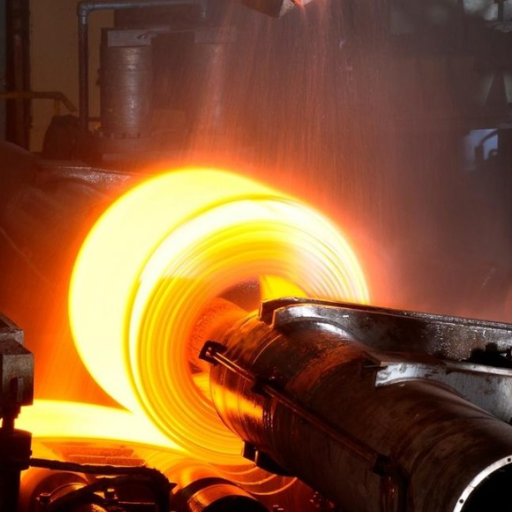
The presence of certain alloys like chromium, nickel, or sometimes molybdenum is responsible for stainless steel having lower thermal conductivity than other metals. These alloys interrupt the lattice pattern of the metal, which interferes with the flow of free electrons. Since free electrons are the most efficient heat transporters in metals, the disruption the lattice structure is stainless steel is subject to makes it less effective at carrying heat. In comparison, aluminum and copper are simpler in structure and have a greater degree of free electron mobility, hence can conduct heat more effectively.
The properties of stainless steel that affect heat transfer
1. Metal Thermal Conductivity
When considering stainless steel’s thermal conductivity, it is important to note that its value is relatively low compared to metallic elements like copper and Aluminum. For example, copper’s value is listed as around 400 W/m·K, while wrought steel is only around 15-25 W/m·K depending on what alloy is used. Because of this, stainless steel is not ideal for equipment requiring rapid speeds in heat transfer.
2. Stainless Steel Heat Capacity
Stainless steel’s specific heat capacity refers to the quantity of thermal energy needed to increase the temperature by one degree against a unit of mass. The average is between 0.46 and 0.50 J/g·°C, meaning it has moderate heating capabilities. For its use in industrial purposes, it makes its use feasible in places with controlled heating.
3. Stainless Steel Alloy make up
The addition of chrome, nickel, and molybdenum into stainless steel alloys alters the value of its overall heat transfer geometry. The usefulness of these elements in alloys disrupts the lattice structure and free electrons to easily move, thereby lowering efficiency in heat transfer.
4. Metal Surface Finish
Heat transfer efficiency in radiative equipment depends on the stainless steel surface finish. Emissivity decreases with better polished and reflective surfaces and increases with matte and rougher finishes which determine how efficiently heat is radiated from the surface.
5. DENSITY
With a usual figure of roughly 7.8 g/cm^3, stainless steel possesses a relatively high density. This characteristic enables stainless steel to retain heat longer after heating, which is useful in certain applications, but problematic in others where rapid dissipation is preferred.
6. Corrosion Resistance
Guards against loss of thermal conductivity, although stainless steel is not directly corrosively resistant, the constant corrosion guarantee contributes to the reliability of the material in transferring heat in harsh environments or throughout prolonged use.
Taking into account the intended operations, the designers and engineers are strategic during the selection of stainless steel for applications involving heat transfer.
How alloying elements impact thermal conductivity
A stainless steel alloy’s thermal conductivity can be significantly modified by its alloying elements due to their atomic structure and electrostatic bonds. For example, copper (Cu) and aluminum (Al), which are already metals with high thermal conductivity, will only add to (or hurt) the stainless steel’s thermal conductivity based on their proportion and how well they fit into the steel’s crystalline structure. An example is copper, which in small quantities can greatly lower the thermal conductivity of some stainless steel grades due to localized lattice distortion.
Commonly observed in austenitic stainless steel, nickel (Ni) tends to reduce its thermal conductivity because it improves the amount of less conductive austenitic structure present in the alloy. Seriated elements in stainless steel are responsible for it’s corrosion resistance also lower thermal conductivity. Increasing amounts of these alloys subsequently inhibit heat transfer more with increasing concentration.
Besides, carbon (C) in small amounts, can lower thermal conductivity because it is instrumental in the formation of precipitates at grain boundaries which interferes with the flow of heat. Researchers have measured some of these impacts, for instance, the thermal conductivity of 304 stainless steel (austenitic) is about 16.2 W/m·K at room temperature. On the other hand, ferritic grades like 430 stainless steel with their body-centered cubic structure have a higher thermal conductivity of ~25 W/m·K.
The interactions of alloying constituents and their proportions must be well understood if the stainless steel is to be modified for particular uses such as in heat exchangers, industrial ovens, or cookware, which require heat transfer efficiency. Through the modification of the alloy selection, an engineer strives to provide an acceptable compromise among thermal conductivity, other mechanical and chemical properties, and performance requirements.
Specific heat and thermal expansion of stainless steel
The alloys within stainless steel have varying specific heat capacities, best exemplified by the range of values lying between 420 J/kg·K and 500 J/kg·K. Specific heat capacity measures a material’s heat energy absorption about its unit mass and temperature elevation in Kelvin. Stainless steel’s isothermal properties and moderate specific heat capacity enable its use in applications with periodic alternating conditions. Take, for example, the stainless steel used in cookware; its thermal properties enhance heating and maintain temperature uniformity.
Thermal expansion characterizes the degree to which a material expands when heated. The different grades of stainless steel have distinct coefficients of thermal expansion (CTE) ranging from 10.8 × 10⁻⁶ /K to 16.5 × 10⁻⁶ /K at 20 degrees Celsius. This indicates that stainless steel undergoes greater thermal expansion than iron, yet not as much as aluminum. The relatively higher CTE of austenitic stainless steels (for instance, 304 and 316 grades) is a design factor for applications with tight geometric control demands, such as in high-precision machinery or high-temperature spatial environments.
The aforementioned physical properties highlight the need for careful selection of the grade of stainless steel for the particular requirements of an application. Knowledge of specific heat and thermal expansion allows engineers to design systems capable of absolute efficiency and structural integrity in varying thermodynamic environments.
Do different grades of stainless steel conduct heat differently?
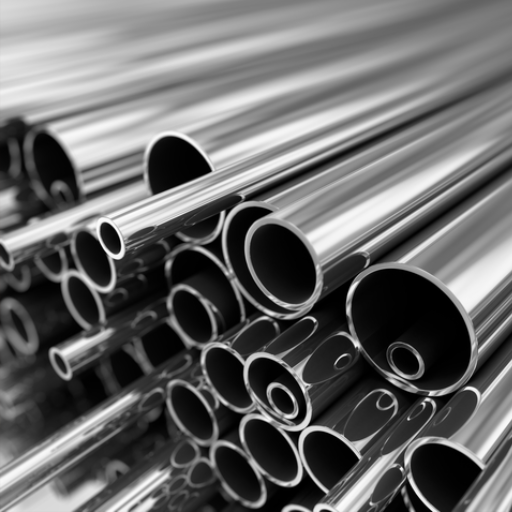
Yes, various classes of stainless steel do conduct heat differently. This variation is dependent on the alloy’s composition and the particular content of elements such as chromium, nickel, and carbon. For instance, austenitic stainless steels, like 304 and 316, often have lower thermal conductivity than ferritic grades such as 430. Ferritic stainless steels do not contain the nickel constituting austenitic types, thus permitting moderately higher transfers of heat. Those differences create a range of grades that are more useful for efficient heat transfer in comparison to others that are preferred for insulation.
Austenitic stainless steel vs. ferritic stainless steel heat conductivity
Austenitic stainless steels, specifically 304 and 316, retain lower thermal conductivity than ferritic stainless steels. Generally, austenitic grades are believed to have a thermal conductivity of around 14-16 W/m·K. This low conductivity is because of the alloy’s high nickel and chromium content, which also adds to the material’s corrosion resistance.
Conversely, ferritic stainless steels, like grade 430, have better thermal conductivity and can range from 23 to 27 W/m ∙ K. The lack of nickel in ferritic grades improves heat transfer, making them useful for automotive exhaust systems and heat exchangers because of the need for swift heat removal.
The difference in thermal conductivity is quite important when selecting materials, especially in construction, manufacturing, and food processing. Although austenitic steels are known to be more durable and resistant to harsh conditions, ferritic grades are preferred when effective thermal conductivity is needed due to their superior thermal performance.
304 stainless steel thermal properties
Industries utilize 304 stainless steel for numerous applications owing to its excellent thermal properties. Its thermal conductivity rests at about 16.2 W/m·K at 20°C, making it lower than ferritic stainless steels, but still satisfactory for many applications, where heat flow is not critical. With a coefficient of thermal expansion of approximately 17.2 x 10^-6 /°C, 304 stainless steel is prone to expansion which can be important in their surroundings with high temperatures and fast shifts in temperature.
The alloy’s 304 stainless steel melting range is between 1,400ºC and 1,450ºC, granting it a fair amount of resistance to high temperatures, as well as providing it with a specific heat capacity which is roughly 500 J/kg·K. This indicates that the alloy can absorb and retain heat. The combination of these thermal characteristics with its corrosion resistance and mechanical strength makes 304 stainless steel an alloy of preference for cookware, heat exchangers, industrial equipment, and much more. These factors work together to guarantee optimal performance when precision selection and control provisions are made in demanding thermal conditions.
Which stainless steel grade has the highest thermal conductivity?
Type 430, a ferritic stainless steel, is probably the highest in terms of thermal conductivity among the various stainless steel grades. It has a thermal conductivity rating of almost 26 W/m·K at room temperature. Of all grades, ferritic stainless steels have the highest thermal conductivity and can be used in areas where heat transfer is required.
In comparison, Type 304 or 316 austenitic stainless steels have a thermal conductivity of about 14-16 W/m·K at room temperature, which is much lower than that of Type 430. Type 430 also has moderate resistance to corrosion of milder environments, making it less expensive. It does, however, have lower resistance to mechanical stress compared to austenitic grades.
Fulfilling these requirements is especially important in the case of heat exchangers or automotive exhaust systems, as well as efficient cookware. This highlights the issue of how composition affects thermally different properties of stainless steel.
Is stainless steel considered a good conductor or poor conductor of heat?
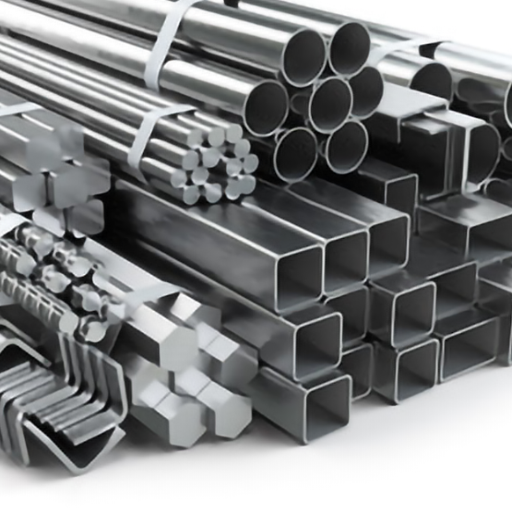
Stainless steel has a thermal conductivity poorer than copper or aluminum since it does not conduct heat as effortlessly. Its thermal conductivity lags behind, so if an application requires a quick transfer, it is not recommended. This property makes stainless steel preferable when quick retention or insulation of heat is required.
When is stainless steel’s relatively low thermal conductivity beneficial?
This property has stainless steel offers great advantages in numerous instances. An example would be cookware, where the hot spots are reduced thanks to even heating, especially when combined with copper or aluminum cores which enhances the thermal distribution. Moreover, stainless steel is great for other applications including the construction of thermos bottles and insulated containers, where the primary concern of maintaining required temperatures, whether high or low, is the reduction of heat transfer.
Stainless steel is used in industries where controlled heat transfer is critical. For instance, in heat exchangers and some chemical processing equipment, stainless steel aids in controlling the transfer of heat enabling proper temperature management. This utility is supported by data, which indicates that stainless steel has a thermal conductivity of approximately 16 W/m·K at room temperature while copper has a much higher thermal conductivity of more than 390 W/m·K. The data captures the essence of why copper is preferred in designs that require insulation or lesser heat transfer. Both everyday items, as well as intricate technological devices, make use of stainless steel due to the unparalleled properties it possesses.
Applications where stainless steel’s heat transfer properties are advantageous
Stainless Steel is an ideal thermal and heat-conductive material that is well-suited for applications that require regulated heat transfer. Typical cookware systems use stainless steel because is frequently employed in multipurpose heat cooking tools as a constituent owing to its strength. Besides, it does not overheat during the cooking process. Research shows that stainless steel cookware have an aluminum or copper core to enhance performance and durability.
Another notable use is within industrial heat exchangers, especially in the chemical and power processing industries. Stainless steel is preferred in environments where fluids or gases undergo heating or cooling due to its corrosion resistance and operational temperature range. Research indicates that stainless steel plates and tubes retain high performance and undergo seamless high pressure and thermal cycle enduring over time.
Stainless steel further finds application in cryogenic uses. It is essential in sustaining the integrity of liquefied natural gas (LNG) during storage and transportation because materials like stainless steel with lower thermal conductivity, like stainless steel, significantly helps reduce heat transfer in storage tanks and transfer pipelines designed for liquefied gases.
In a comprehensive view, the unparalleled durability of stainless steel, environmental resistance, thermal properties, and strategic allied multifunctional industrial needs concurrently emphasize the need for everyday and high-end industrial purposes.
How does stainless steel perform in heat transfer applications?
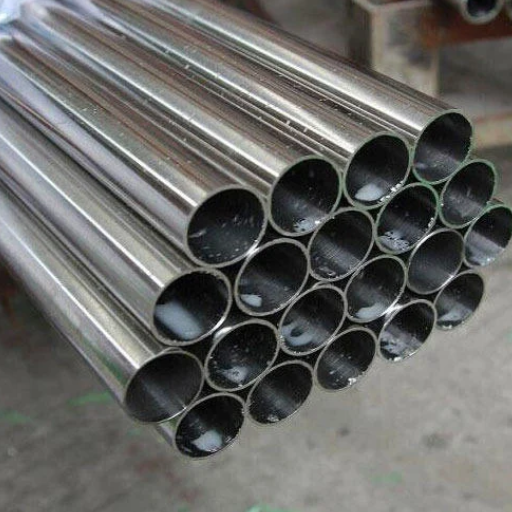
The thermal conductivity of stainless steel is moderate when compared to aluminum and copper, and its performance in transferring heat is slower. However, the slower rate of transfer makes stainless steel viable in cookware, heat exchangers, and storage tanks. Such applications require heat retention and, therefore, need stainless steel. Other materials can be effective for rapid dissipation.
Stainless steel in heat exchangers and cooling systems
Heat exchangers and cooling systems benefit from powerful construction materials such as stainless steel. The material can endure elevated heat, resist corrosion, and does not easily give way to structural problems over time. Withstand two heats! Stainless steel does have lower performance in transferring heat than copper, but its resistance to scaling and superior strength makes up for it across the rest of the harsh environment. Long-lasting durability makes stainless steel a reliable option, but one must keep comfort in mind as it is not as reliable when speed is the priority.
Balancing corrosion resistance with heat transfer needs
When it comes to heat exchangers, there is always a trade-off between the level of corrosion resistance and the rate of heat transfer required. Take stainless steel, for example; it has a thermal conductivity of about 16 W/m·K, much lower than the 400 W/m·K of copper. What stainless steel does outperform copper in is the level of corrosion resistance it has, especially when used in chemical, saltwater, or moister environments. This assures a longer lifespan with maintenance-free intervals.
Not to forget, Aluminum can also be used for such applications because it has a thermal conductivity of approximately 237 W/m·K, but it also has a moderate level of corrosion resistance. Still, it is less sturdy when put alongside stainless steel in highly corrosive environments. This dilemma is solved by greater numbers of engineers these days by using coatings or specially designed alloys which improve both properties. Newer methods like nanostructured surfaces, hybrid materials, and others are also using heat transfer with corrosion resistance to create a buffer zone between high performance and service life.
A clear definition of the operating environment, such as acidic, saline, or high temperature, is quite fundamental when it comes to the selection of materials while designing for sustainable solutions along with performance and durability.
Can stainless steel’s thermal conductivity be improved?
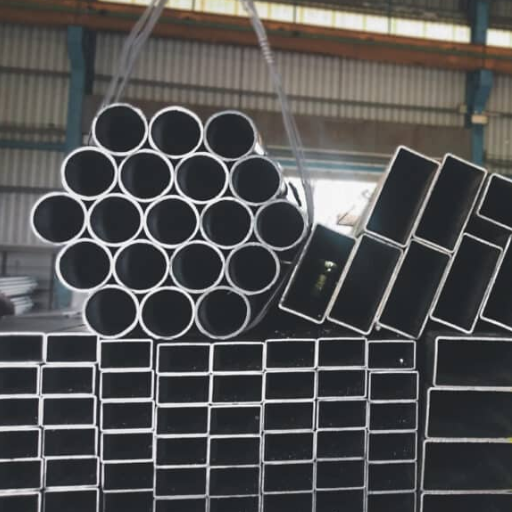
Indeed, the thermal conductivity of stainless steel can be improved through modifications of its alloys. The ability of stainless steel to transfer heat can be improved by the addition of certain elements like aluminum or copper. Another method is using composite materials that incorporate other highly conductive materials into stainless steel. These approaches while improving the heat transfer performance retains essential characteristics such as strength and resistance to corrosion.
Methods to enhance heat transfer in stainless steel applications
- Microstructural Modifications
These techniques focus on the regions with microstructured geometry, or precisely, the “size” of the different factors constituting the stainless steel. By applying heat treatment or controlled rolling, the microstructure can be refined, which yields higher thermal conductivity. Studies have shown that optimizing grain size and reducing internal defects enable more efficient heat flow. For example, annealing stainless steel at certain temperatures results in lattice imperfections yielding more than 20% in thermal transfer.
- Use of High-Thermal Conductivity Coatings
Incorporating graphite oxide and aluminum oxide (Al2O3) on the stainless steel surface is an advanced coating application that improves the alloys thermal transfer properties. These coatings not only facilitate heat transfer but surface thermal resistance is also improved which is important for industrial heat exchangers. Aluminum-based coatings provide increases in thermal performance ranging from 15%-25% depending on the use.
- Hybrid Stainless Steel Composites
The integration of stainless steel with highly thermally conductive materials, like copper or graphene, produces composites that keep the mechanical and anti-corrosive characteristics of stainless steel while improving thermal performance. Research shows that the addition of copper into stainless steel matrices can increase thermal conductivity by as much as four times. This is now being used in electronic cooling systems.
- Surface Modifications to Increase Thermal Contact
Heating copper surfaces cylindrically rotates so that they rub against the counterpart material. This allows for better heats transfer as there is an increase to contact surface. In addition, techniques like etching, laser structuring, or generating grooves on the surfaces lead to further enhancement towards dissipation exceeding 10% to 30% on average.
- Use of Multi-Layer Structures
Stainless steel with slices of aluminum, or carbon nanotubes forms multi-layered composites. These have been known to sustain extreme heat with great effectiveness. Layered adjacent composites aid in heat flow while maintaining the strength of the structure. It is increasingly becoming popular in the fields of advanced manufacturing and energy systems.
These alloys help engineers and manufacturers stainless steel which is best known for its durability as well as its resistance to oxidization or corrosion while weakening the heat transfer efficacy.
Composite materials that combine stainless steel with better conductors
Industries requiring efficient heat transfer are beginning to implement new composites that incorporate stainless steel with highly conductive materials such as aluminum and copper. Manufacturers are now able to combine the strength and corrosion-resistant properties of stainless steel with the superior thermal conductivity of these metals. This balance allows for applications in heat exchangers, cooling in electronics, and advanced parts in aerospace.
As an example, certain configurations of copper-stainless steel composites provide thermal conductivity of more than 300 W/mK, while the stainless steel alone sits between 15-25 W/mK. Also, aluminum-stainless steel composites create an ultra-light and durable heat dissipative material which also preserves mechanical strength, but at a lower mass. These materials can be categorized using powder metallurgy, explosive welding, and diffusion bonding to guarantee a seamless interface between the stainless steel and conductive material for energy transfer.
Nanoscale enhancements still in the works, such as bridging stainless steel with graphene-based structures, increase both conductivity and durability. Such new ideas boost thermal performance by greater than 20% relative to the existing composite materials. These innovations hint at a future wherein precisely designed composites will meet the ever-increasing demand for effective heat transfer solutions from numerous industries.
Reference Sources
-
Characteristics of Solar Thermal Absorber Materials for Cross Absorber Design in Solar Air Collector:
- Explores materials used in solar thermal absorbers, including stainless steel.
- Highlights that stainless steel is used for its ability to absorb and transfer heat effectively in specific applications.
- Methodology involves testing various materials for their heat absorption and transfer efficiency in solar air collectors.
-
Effect of Ultrafast Heating on AISI 304 Austenitic Stainless Steel:
- Investigates the impact of ultrafast heating on the thermal properties of AISI 304 stainless steel.
- Finds that heat treatment at high temperatures enhances certain thermal characteristics of the material.
- Methodology includes controlled ultrafast heating experiments and analysis of resulting thermal behavior.
-
The Thermal Conductivity of AISI 304L Stainless Steel:
- Provides a detailed analysis of the thermal conductivity of AISI 304L stainless steel across a wide temperature range (100–1707 K).
- Highlights that while stainless steel conducts heat, its thermal conductivity is lower compared to other metals like copper or aluminum.
- Methodology involves compiling and critically analyzing experimental data on thermal conductivity.
Frequently Asked Questions (FAQs)
Q: What is thermal conductivity and why is it important for materials like stainless steel?
A: Thermal conductivity is a material’s ability to conduct heat. It’s important for materials like stainless steel because it determines how efficiently heat is transferred through the material, which is crucial for applications like cookware and food processing equipment.
Q: How does the thermal conductivity of stainless steel compare to other metals?
A: Stainless steel’s low thermal conductivity means it doesn’t conduct heat as efficiently as other metals like copper or aluminum. While copper’s high thermal conductivity makes it excellent for heat transfer, stainless steel’s properties make it more suitable for applications where corrosion resistance is needed.
Q: Does stainless steel have good thermal conductivity?
A: No, stainless steel does not have good thermal conductivity compared to metals like copper and aluminum. Its ability to conduct heat is lower, which is why it’s often used in applications where heat retention and corrosion resistance are more important than rapid heat transfer.
Q: Why is stainless steel preferred over aluminum for certain applications despite its low thermal conductivity?
A: Stainless steel is often preferred over aluminum because of its corrosion resistance and ability to maintain structural integrity under various conditions. While aluminum has a higher thermal conductivity, stainless steel’s ability to withstand corrosion makes it ideal for certain applications like food processing equipment.
Q: How does electrical conductivity relate to thermal conductivity in stainless steel?
A: Electrical conductivity and thermal conductivity are related, as materials with high thermal conductivity often have high electrical conductivity. However, stainless steel has relatively low electrical and thermal conductivity compared to metals like copper, which excel in both areas.
Q: What are the thermal properties of stainless steel that make it suitable for specific applications?
A: The thermal properties of stainless steel, such as its low thermal conductivity and high corrosion resistance, make it suitable for applications where heat loss needs to be minimized, and durability is essential, such as in the construction of buildings and food processing equipment.
Q: How does the thermal conductivity of stainless steel affect heat loss in cooking applications?
A: Stainless steel’s low thermal conductivity means it retains heat better, which can reduce heat loss in cooking applications. This property makes it ideal for cookware where consistent heat retention is desired, though it may not heat as evenly as materials with higher thermal conductivity.
Q: Is stainless steel’s ability to conduct heat efficiently or not?
A: Stainless steel does not conduct heat efficiently compared to materials like copper or aluminum. Its thermal conductivity is lower, which means it is slower to heat up and cool down, but this can be advantageous in applications where heat retention is beneficial.
Q: How does stainless steel’s ability to maintain structural integrity benefit its thermal applications?
A: Stainless steel’s ability to maintain structural integrity under various conditions, including exposure to high temperatures, makes it beneficial for thermal applications where durability and resistance to warping or degradation are critical.

